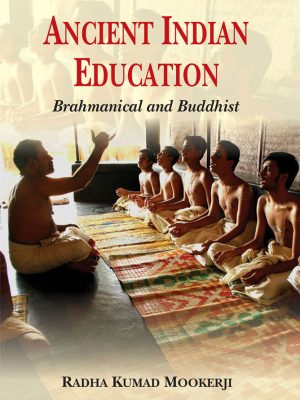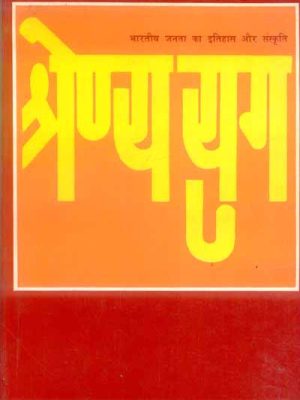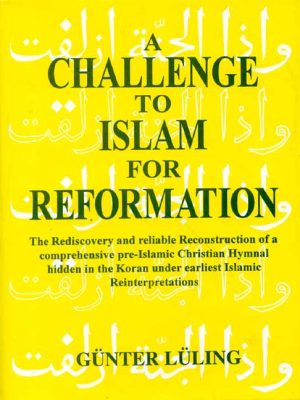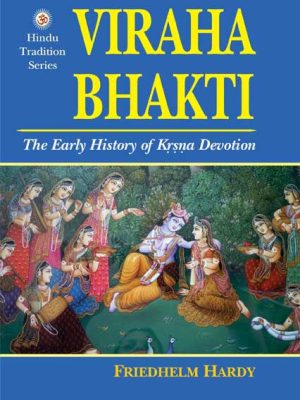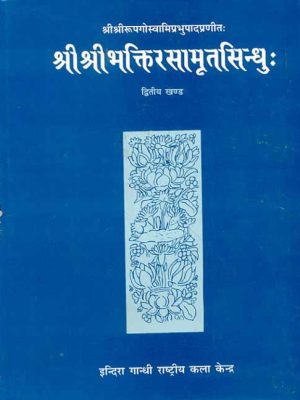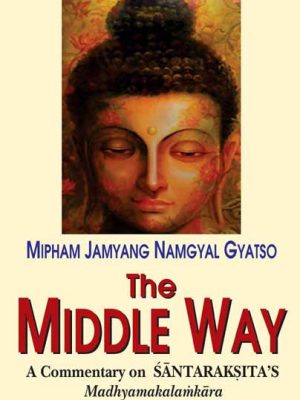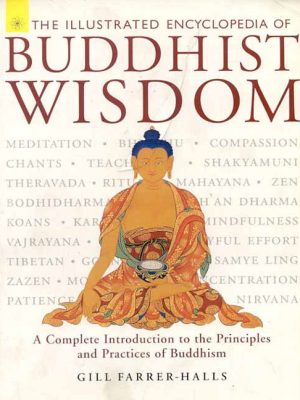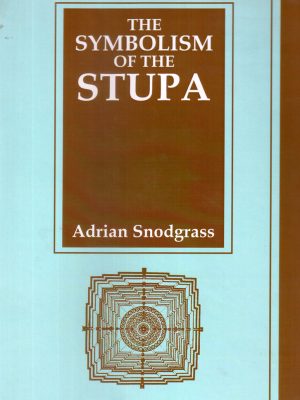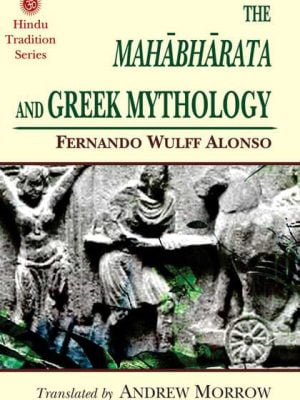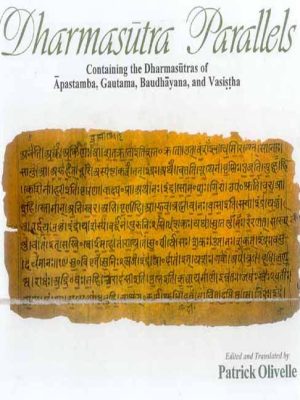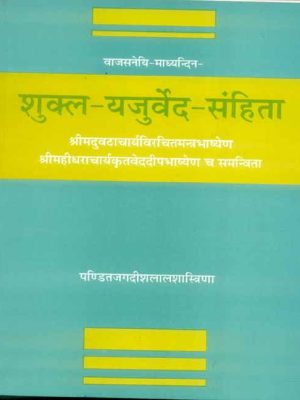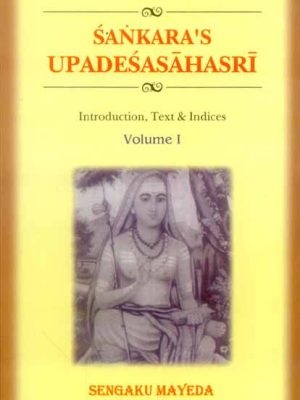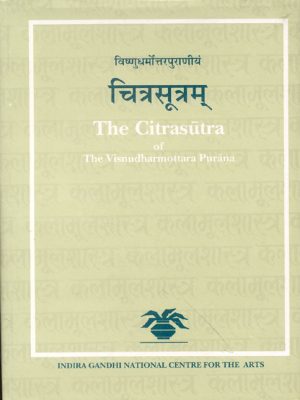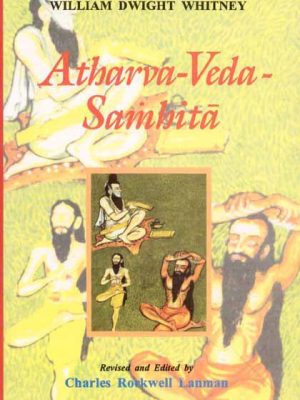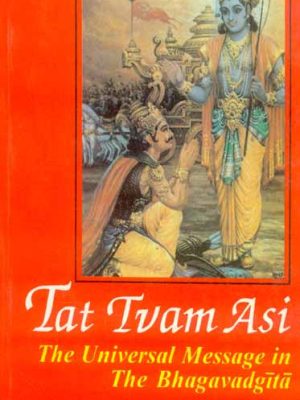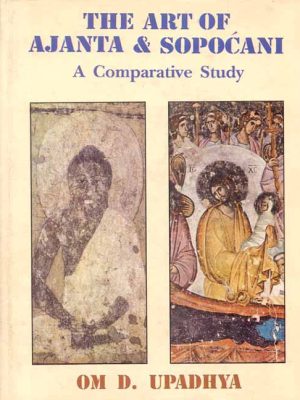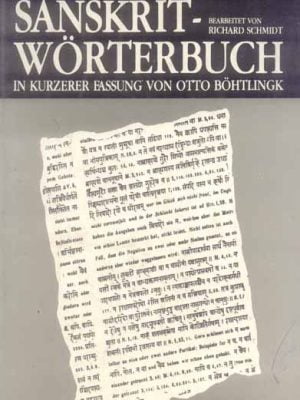Motilal Banarsidass
-
Principles of Composition in Hindu Sculpture: Cave Temple Period
The present study represents an approach to a hitherto unexplored aspect of Hindu sculpture. It deals with premedival sculpture concentrating exclusively on the question of composition have resulted from a careful analysis of the great sculpture of the Rock-Temples at Elura, Badami Mahabalipuram and others of the pre-medival period of the Rastrakuta, Calukya and Pallava Schools.
₹1,495.00 -
Ancient Indian Education: Brahmanical and Buddhist
This work is intended to fill up a gap in the literature on the history of Education, which has not taken adequate account of the unique contributions made by Hindu thought to both educational theory and practice. The work is divided into Two Parts. Part 1 (Chs. 1-12) deals with the concepts and practices of Brahmanical Education on the authority of Veda, Astadhyayi, Arthasastra of Kautilya, Sutra literature and Epics. It discusses the problems of Legal, Industrial and Vocational Edu
₹1,495.00 -
Shrenya Yug: Hindi Translation of Classical Age
Shrenya Yug: Hindi Translation of Classical Age is authored by R. C. Majumdar, Shivdaan Singh Chauhan.
₹1,495.00 -
-
-
Dharmasutra Parallels: Containing the Dharmasutras of Apastamba, Gautama, Baudhayana and Vasistha
Dharmasutra Parallels: Containing the Dharmasutras of Apastamba, Gautama, Baudhayana and Vasistha
The Dharmasutra Parallels provide a synoptic presentation of the passages that may be found in the four Dharmasutras of Apastamba. The teachings of Gautama, Baudhayana, and Vasistha all focus on the same concepts. The Dharmasutras are the earliest complete legal code from ancient India that has survived to the current day. An in-depth examination of these early legal treatises is required if we are to have any hope of comprehending not only the legal history of the three or four centuries prior to the common era, but also the cultural and religious history of that time period. This was the time when many of the characteristics that are typically associated with Indian civilization began to take shape during that era.
Author
Patrick Olivelle
₹1,495.00 -
Shukla-Yajurved-Samhita
Shukla-Yajurved-Samhita
The Yajurveda Samhita, also known as the prayer book of the Adhvaryu priest, is said to have had as many as 101 recensions during the time of the grammarian Patanjali. However, only five of these recensions have survived and are available at this time. These recensions are known as Kathaka, Kapisthala, Maitrayani, Taittiriya, and Vajasaneyi. The first four of these recensions belong to what is designated as the The Vajasaneyi Samhita, which gets its name from Yajnavalkya Vajasaneya, the principal instructor of this Veda, has been passed down in two forms that are somewhat different from one another. These versions are known as the Kanva Samhita and the Madhyandina Samhita. The primary distinction between the texts of the ‘Black’ and ‘White’ Yajurveda is that the latter only includes the Mantras, which are the prayers and sacrificial formulae that the priest is required to recite, whereas the former includes, in addition, a presentation of the sacrificial rites that are associated with them as well as the Brahmana, which is a theological discussion on the same topic. This is the most important distinction between the two types
About the Author(s)
Pandit Jagdishlal Shastri
₹1,495.00Shukla-Yajurved-Samhita
₹1,495.00 -
The Upadesasahasri of Sankara: 2 Volumes: Introduction, Text and Indices
The Upadesasahasri of Sankara: 2 Volumes: Introduction, Text and Indices
It is widely agreed that Sankara, an Indian philosopher who lived in the eighth century, was the greatest thinker in the lengthy history of Indian philosophy as well as in the metaphysical tradition known as Vedanta. Sankara is credited with founding the Vedanta school of thought. The Advaita or non-dualist approach to the issue of existence and ultimate reality is emphasised in the Advaita Vedanta school or philosophy, which was developed by him. For hundreds of years, this way of thinking has been the dominant school of thought in India.
The majority of Sankara’s writings are comments on other great works of Indian philosophy, such as the Brahmasutra, the Bhagavadgita, and the Upanisads. The Upadesasahasri, also known as “A Thousand Teachings,” is the only independent and non-commentary work that can be safely attributed to him; the other independent writings that have traditionally been ascribed to him are all probably spurious. The Upadesasahasri, also known as “A Thousand Teachings,” has been critically edited and translated into English here.
Sengaku Mayeda, the author of this work, has provided both academics and general readers with a critical edition based on the analysis of 27 metrical and 11 prose manuscripts, as well as an exact and readable English translation of the work based on his definitive edition of the work, in addition to his extensive introduction to the work. These materials can be found on this website. This Indian philosophical classic is now available to a far larger audience thanks to his lucid and trustworthy translation as well as his in-depth introduction that discusses Sankara’s biography as well as his ideas.
Author
Sengaku Mayeda
About the Author(s)
₹1,495.00 -
Citrasutra of the Visnudharmottara Purana
Citrasutra of the Visnudharmottara Purana
“It Has Been Beautiful Produced……. Citrasutra of the Visnudharmottara Purana the Book Presents Intersting Readings as It Includes all the Information Given By The Previous Scholars And Other Texts Regarding the Use And Interpretation Of Technical Terms,Techniques Of Painting And Its Classification.The Author Has Been Successful In The Task She Sets Before Herself To Present A Thoughtful Interpretation Of A Text And The Underlying Aesthetic Theory Of Indian Art And Its Relevance Today.
The author contends that these pieces only make sense when placed inside a framework, which must by definition be contingent, which runs counter to the conventional wisdom that the past may be accessed by us in an unmediated manner via the sacred parts of the texts.
The Citrasutra, which is made up of nine adhyayas or chapters and can be found in the third khanda of the Visnudharmottara Purana, is presented as a work that has been “discovered” and interpreted in a variety of ways in the introduction. As a consequence of this, it has a lengthy history of interpretation that has been contributed to by some of the most influential art historians of the 20th century, such as A. K. Coomaraswamy, Stella Kramrisch, and C. Sivaramamurti. The concerns of art historians, which are bound up with themes of Indian identity and the building of an authentic past, are the source of the interest in the book. This has sparked interest in the work.
Author
PARUL DAVE MUKHERJI
₹1,495.00 -
Atharva-Veda-Samhita (2 Vols.)
Atharva-Veda-Samhita
‘the Atharvan Veda’ or ‘the Magic Formula Knowledge.’ For ethnologists and religious historians alike, the Atharva-veda Samhita holds great significance because it is a treasure trove of information about ancient Indian popular beliefs, such as the belief in countless spirits, imps, ghosts, and demonic entities of all shapes and sizes, as well as the practise of witchcraft. There are critical notes on the text and readings of Paippalada of Kashmere version provided by the late Professor Rothfurter, as well as notices of similar passages in all other Vedic texts and data from Hindu scholars regarding authorship, divinity, and metre for each verse, as well as references to anciallary literat. This work includes all these things.
About the Author(s)
₹1,495.00Atharva-Veda-Samhita (2 Vols.)
₹1,495.00 -
Tat Tvam Asi (2 Vols.): The Universal Message in The Bhagavadgita
The Bhagavad Gita, a great poem attributed to Rsi Vedavyasa, expounds Vedanta philosophy in the dynamic setting of a battlefield where Lord Krsna reveals the teaching of Vedanta to the warrior prince Arjuna. The essence of the Gita is to make one realise tat tvam asi. We are really the atman or Divinity with an outer covering of the physical body inside which is subtle body consisting of the mind and the intellect. Unfortunately we get attached to the body and develop the ego which is the ‘I’ or ‘My’ -ness in us. It makes us believe that our physical body is real. We forget that we are living because of the life-force inside us. The life-force is the spiritual energy and is known commonly as ‘soul’ or Atman. Tat Tvam Asi is a ‘great Upanisadic sentence’ exhorting us to realise our own divine identity. To realise one’s own divine status, to realise the same divine status in all forms manifest in the universe is to realise the oneness of all beings.
Contents (Vol. 1)
Forword, Message from Swami Hari Har Ji, Note Acknowledgements from the Author, Introduction, Arjuna-Visada-Yoga, Samkhya-Yoga, Karma-Yoga, Jnana-Yoga, Karma-Samnyasa-yoga, Atmasamyama-Yoga, Jnana-Vijnana-Yoga, Rajavidya-Rajaguhya-Yoga, Vibhuti-Yoga.
(Vol. 2)
Visvarupa-Darsana-Yoga, Bhakti-Yoga, Ksetra-Ksetrajna-Yoga, Gunatraya-Vibhaga-Yoga, Purusottama-Prapti-Yoga, Daivasura-Sampad-Vibhaga-Yoga, Sraddhatraya-Vibhaga-Yoga, Moksa-Samnyasa-Yoga.
Review(s)
About the Author(s)
₹1,500.00 -
The Art of Ajanta and Sopocani: A Comprehensive Study
The Art of Ajanta and Sopocani: A Comprehensive Study
Pauranic Prana-aesthetics, a finer shade different from that of Vitalistic aesthetics (the earlier having breathing-rhythm of “Kshaya- Vriddhi” – diminution and augmentation – other than the latter’s emphasis only on the rhythm of augmentation) has been delineated in this study with examples from the world’s two of the best art-monuments: Ajanta (India), now not remaining unknown even to the most casual connoisseur, and Sopocani (Yugoslavia), the most significant and monumentally beautiful work of Byzantine art.
Tracing Prana-aesthetics as the aesthetics of inner-light coded in the creeper-motif by the artists of Ajanta, this work emphasises decoding of the creeper-motif by Byzantine artists culminating into the frescoes of Sopocani done in Hellenistic Byzantine aesthetics beatified by Hesycast meditation to which that
of Buddhists was not unknown. Comparisons of various determinant aspects, aesthetics and artistic denominators, and constraints not allowing similar consummation are properly investigated to substantiate the thesis that Pranaaesthetics transfigures at Ajanta but transubstantiates at Sopocani. The significance of the anabolic aspects of this aesthetics is highlighted especially as a way out from the reductivistic tendencies of the present day visualarts straining them upto the stage of catabolic dissolution.
₹1,500.00 -



